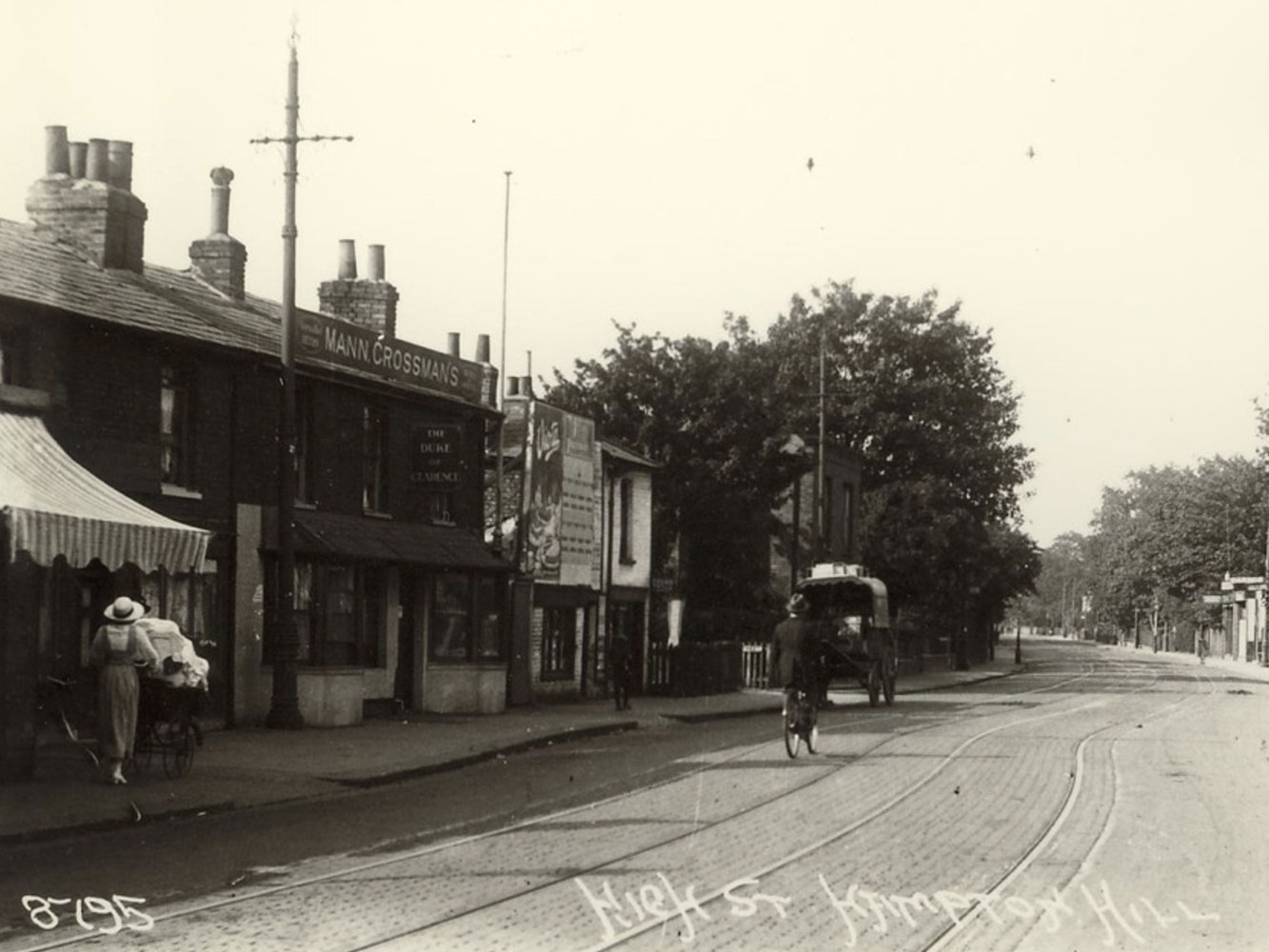
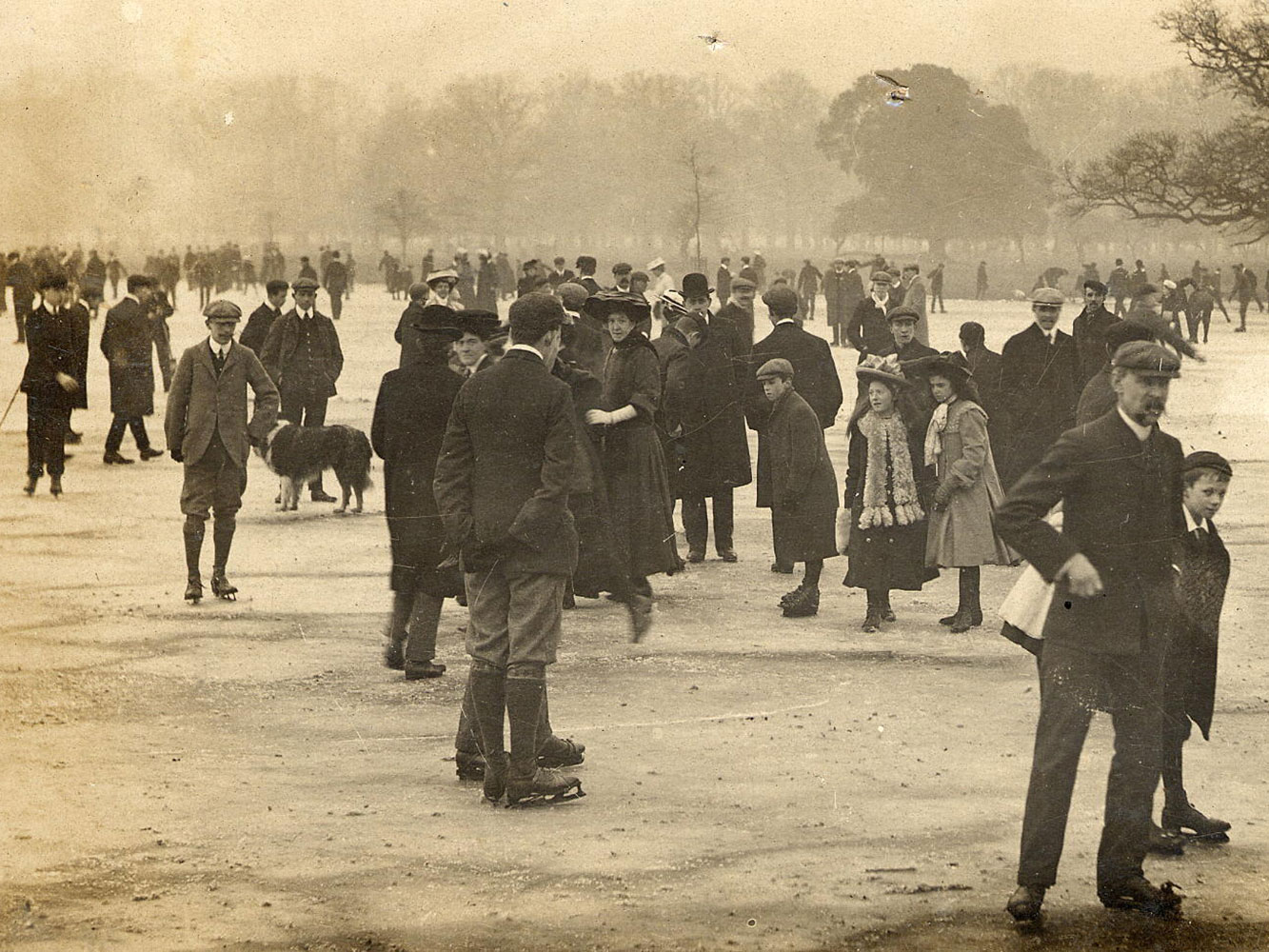

Hampton Hill was originally common land used for cattle grazing, with a Windmill being built in 1780s to grind locally grown corn and grain.
By 1850 there were 24 traders on the then High Street and the population grew as labourers moved in to work on the construction of the waterworks in Hampton. In 1863 St James’s Church was built and its first vicar, Fitzroy John Fitzwygram set about building cottages and houses for labourers and improving amenities in the area.
In the late 1870s the windmill was demolished, and the population had grown significantly and in 1890 the area was named Hampton Hill after being previously known as the Common and new Hampton. Whilst there is no detectable hill in Hampton Hill, the name originated in the 1800s because the land was on ground higher than the Thames flood plain.
In 1903 a tram service was installed between Stanley Road and Hampton Court which enabled the area to develop quickly, with buildings being demolished to widen the road.
Hampton Hill hosts a few historical and interesting buildings and landmarks including:
- St James’s Church
- Hampton Hill War Memorial (in the churchyard of St James’s Church)
- Brick boundary walls to Bushy Park (listed with a deer leap policy)
- Entrances to Bushy Park – a Grade I listed park
- Templeton Lodge – Grade II Listed Building from late 18th/Early 19th century
- Old Brew House – Bushy Park
- Hampton Hill Library (on Windmill Road now converted into flats)
- The Old Dairy (on the High Street – now converted into flats)
- Longford River – originally created to supply water to Hampton Court Palace
- Cavan Bakery – one of the oldest local bakeries
- United Reformed Church
- Clarence House Grade II Listed Building Early 19th Century (now Clarence House Preparatory School)
Hampton Hill has some unusual, unique businesses including The Old Violin Workshop, an independent Joiners (Park Gate Joinery), a picture framer (Leigh Gallery), our Hampton Hill Theatre, an independent butcher (Robsons), an independent bicycle shop (Burt’s Cycles), a music shop (Hillsound). A yoga studio and gym, along with a vast variety of other fantastic independent business keen to join this vibrant business community.
The High Street
A measure of its character, style and history is that just about the whole of the High Street is a Conservation Area (CA). There are over 35 buildings on the council’s list of Buildings of Townscape Merit (BTM), including the United Reformed Church; Hampton Hill Dairy; Nos 52, 131 and 147 and the Duke of Clarence pub. The building style is variegated marked by the pronounced changes in roof lines and diverse frontages. It is all ‘in and out’ – in architectural terms ‘articulated’ or its parts clearly marked or defined.

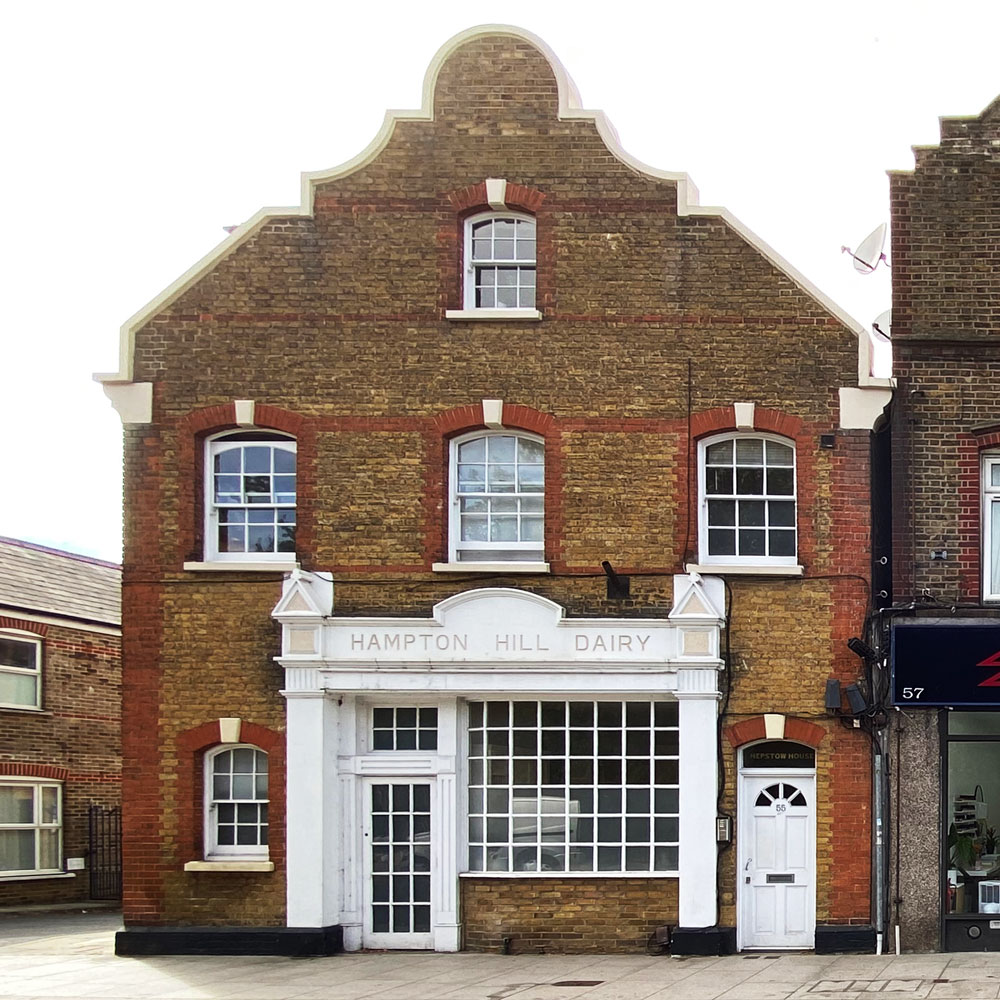
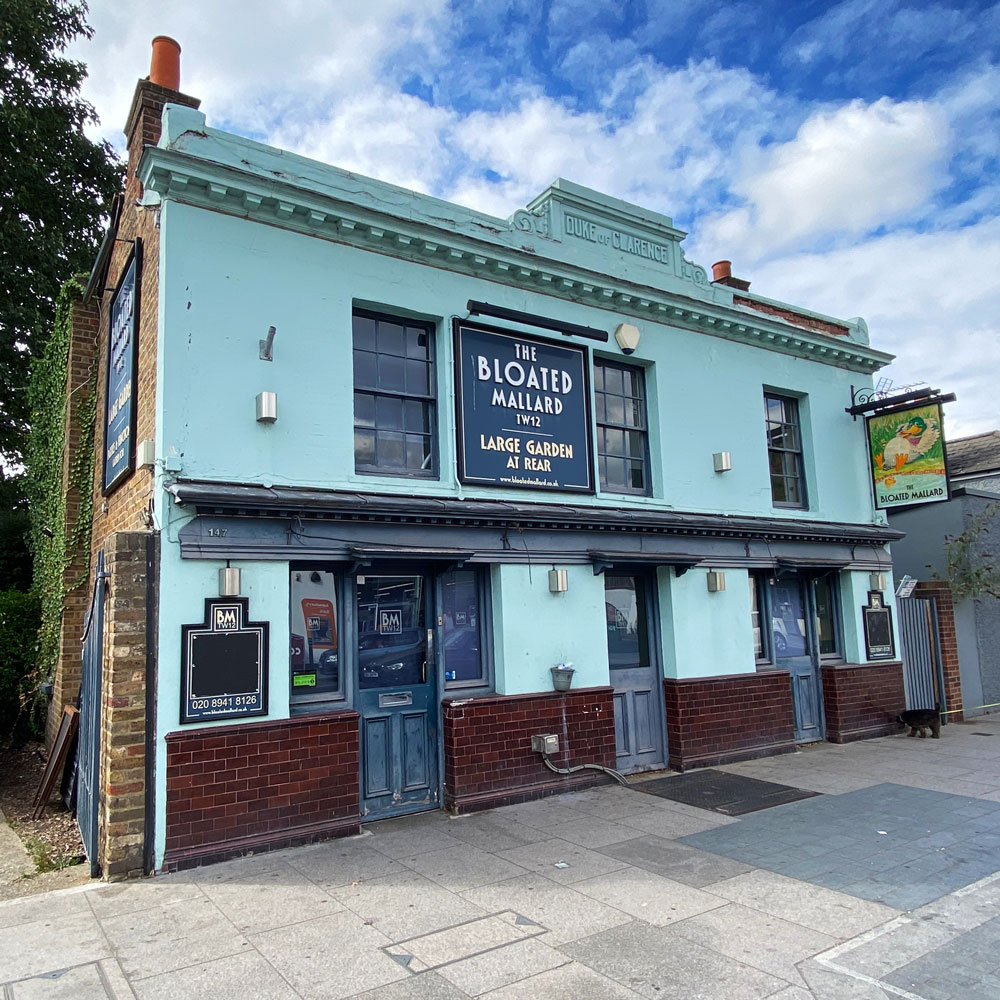
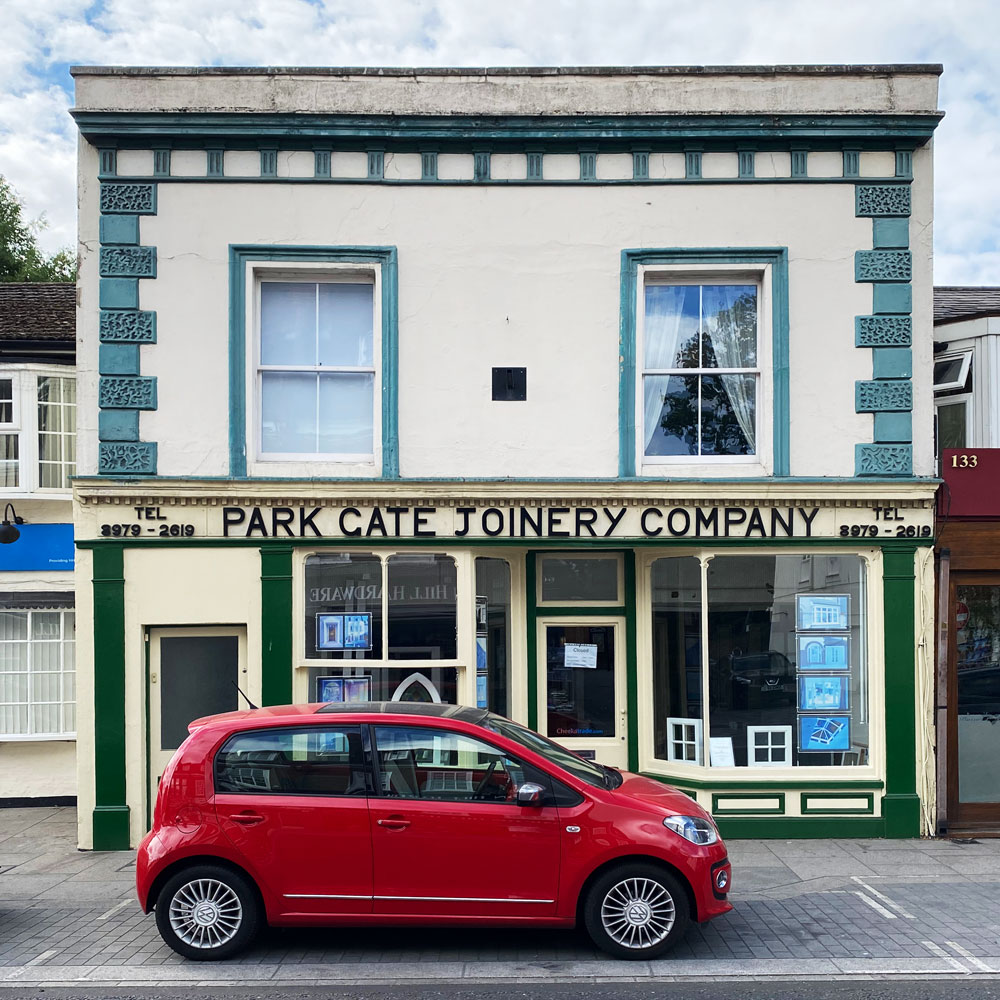
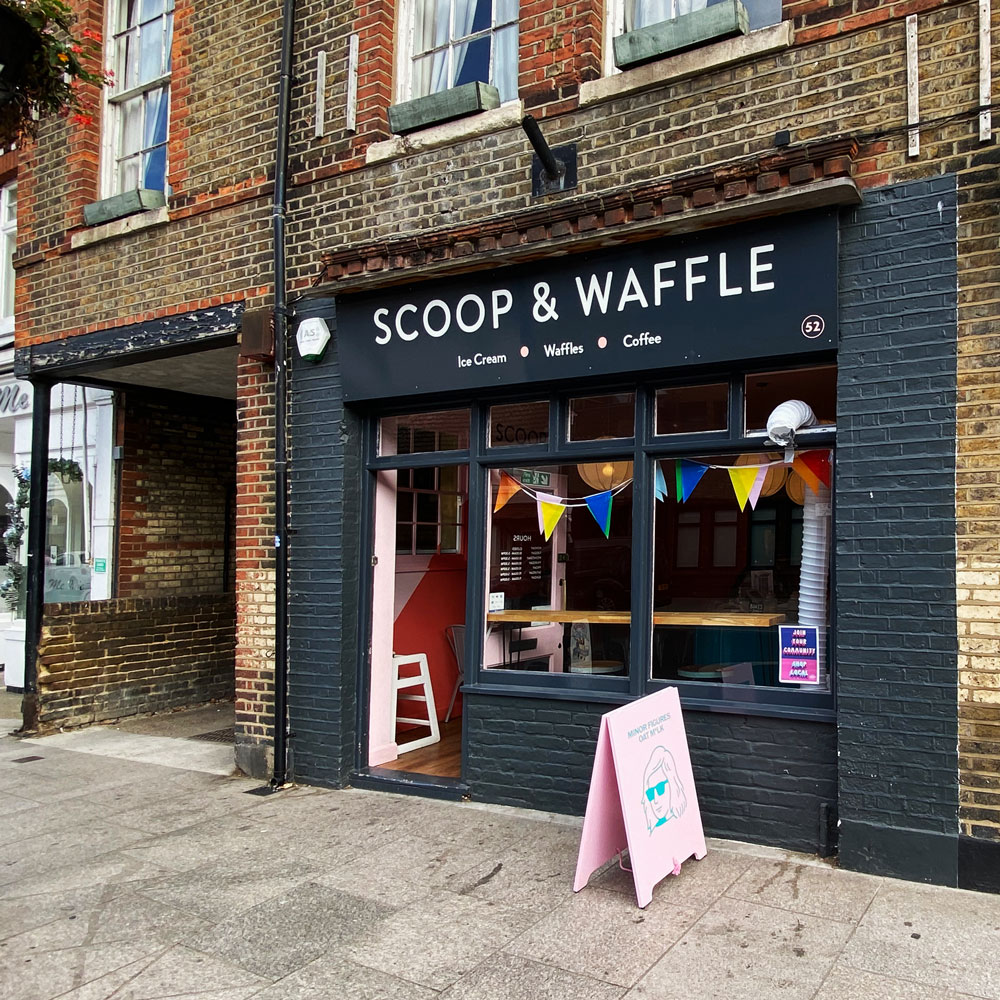
There are three listed ‘buildings’. The wall to Bushy Park and two conventional ‘buildings’, Templeton Lodge (No 114) and Clarence House (Nos 161 & 165). The latter two were both restored, refurbished and repurposed in the 1980s by a local architect (who has lived in the same house in Holly Road for over 50 years).
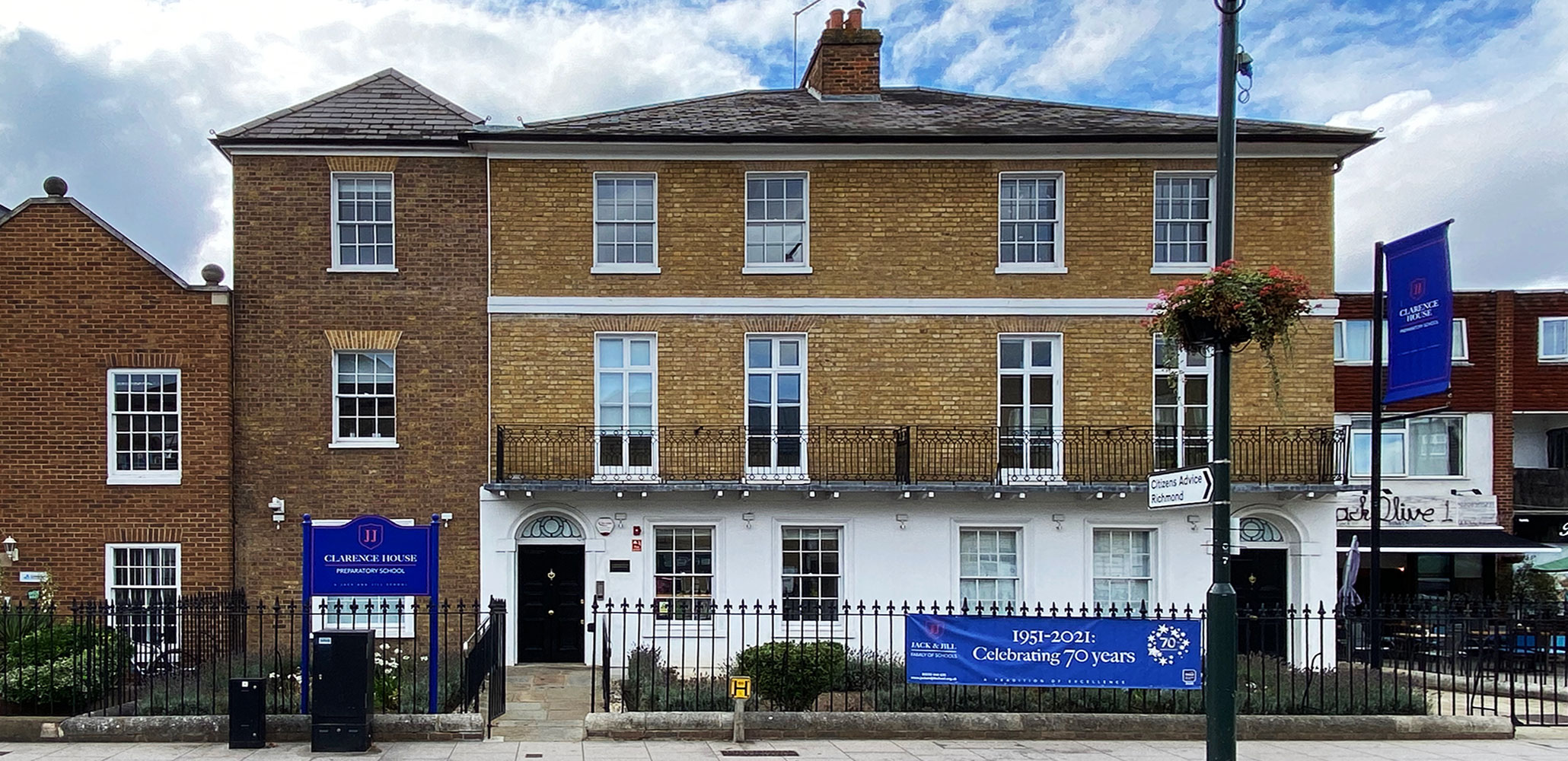
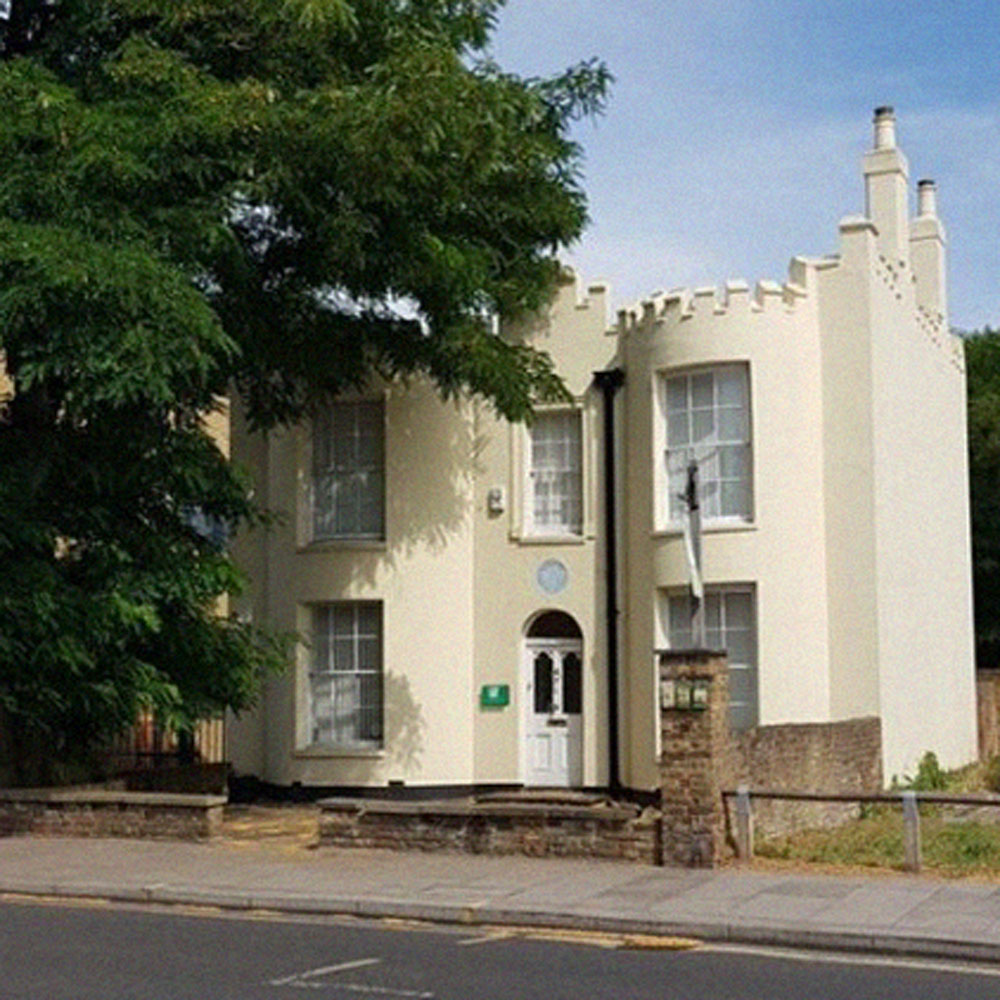
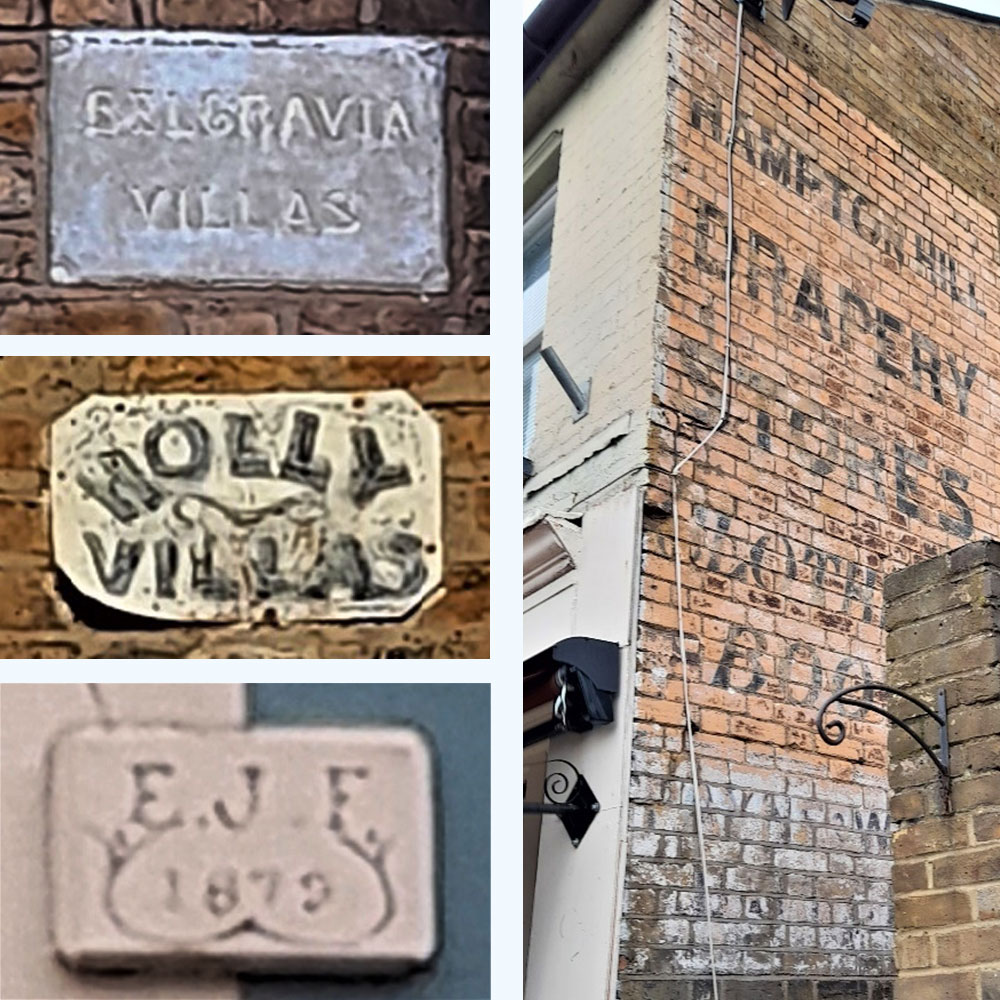
Clarence House is one of a row of three that were originally shops. Whether one of these was once a laundry we do not know but a guidebook to the Hamptons contains a less than ‘politically correct’ advertisement.
Holly Road, opposite the entrance to Bushy Park, is itself particularly charming with the two main terraces named Holly Villas and Belgravia Villas and 8 BTMs.
Walk along the High Street and you’ll see other plaques, little details like the ‘ghost sign’ for Hampton Hill Drapery Stores and original shop fronts like Attic (No 94) and Cavan Bakery’s original shop (No 12). It is unusual in that one side is a Royal Park which reduces its ‘catchment area’ for customers by 50% of that for a conventional village High Street.
That it survives, thrives as a vibrant attractive place to explore is in part due to its history and charm, the cafés, and in the main, that the shops provide all the essentials.
Hampton Hill
At the time of the Enclosure Act of 1811 the whole of Hampton Hill was still common land; after the Act this land was parcelled up and development began slowly. At first the only street and certainly the only shopping street was High Street. The High Street remains the only shopping street today.
A directory of 1839 lists 26 businesses of which about 17 could be considered as shops. These include 3 boot and shoemakers, 3 grocers, 2 butchers, 2 coal and corn merchants and 2 public houses (The Duke of Clarence and The Duke of Wellington). The Duke of Wellington (now converted to housing), which is in fact just outside Hampton Hill, was in existence before 1816. It was then in the occupation of Joseph Burton, who no doubt gave his name to the adjacent Burton’s Lane which forms the boundary. The exact age of The Duke of Clarence (recently changed to the Bloated Mallard but now reverted to its orginal name) is unknown, although it probably dates to before 1830. The Post Office, also later known as Makepeace’s (the printers) was in the same building from 1835 until 1995 when it moved a few doors along.
In 1850 there were 24 traders, including three beer retailers. The population grew in the 1850s and 1860s with the arrival of labourers building the Hampton Waterworks and the railway. Between 1851 and 1871 it grew by a third from approximately 600 to around 800. Many were housed in wooden shacks or hovels. The increase in population led to the building of a new church, St James’s, and the making of a separate parish in 1863.
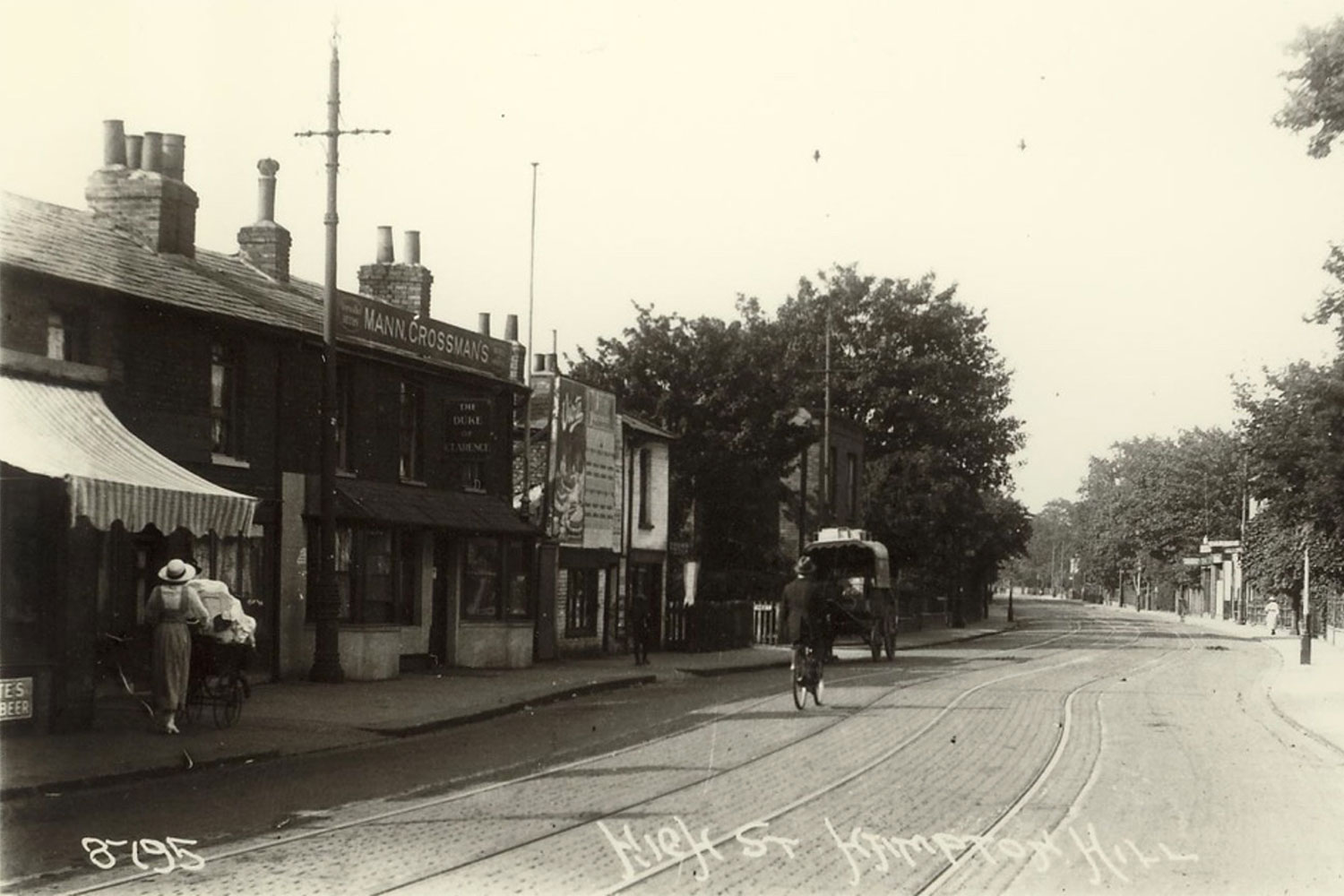

The Census for 1851 shows occupations broadly like those in Hampton with the notable exception of servants where Hampton had 22% in that occupation, reflecting the many large properties there, and Hampton Hill only 6%. Overall the figures for Hampton Hill were: labourers 22%, servants 6%, gardeners 5%, laundressses 4%, carpenters 3%, bakers 2% and dressmakers 2%. (A further 17% were of independent means.)
The 1860s saw a few pubs built including The Rising Sun and The Star in High Street and The Windmill in Windmill Road. By the 1880s many new roads had been built and a large area was now covered by nurseries and greenhouses. The principal growers were Sherwood’s, Page’s, Gill’s and Milne’s. Flowers, particularly carnations and daffodils, were the main crop.
Other notable businesses included Prewett’s Dairies and its shop at the southern end of High Street which is now built on and converted to housing. The nearby Drill Hall and adjacent site was used by the GPO for storing large drums of cable and was later used by the Four Winds Press. In recent years, the building was extended and used as officers before recently being converted to housing and is now called Cambridge House.
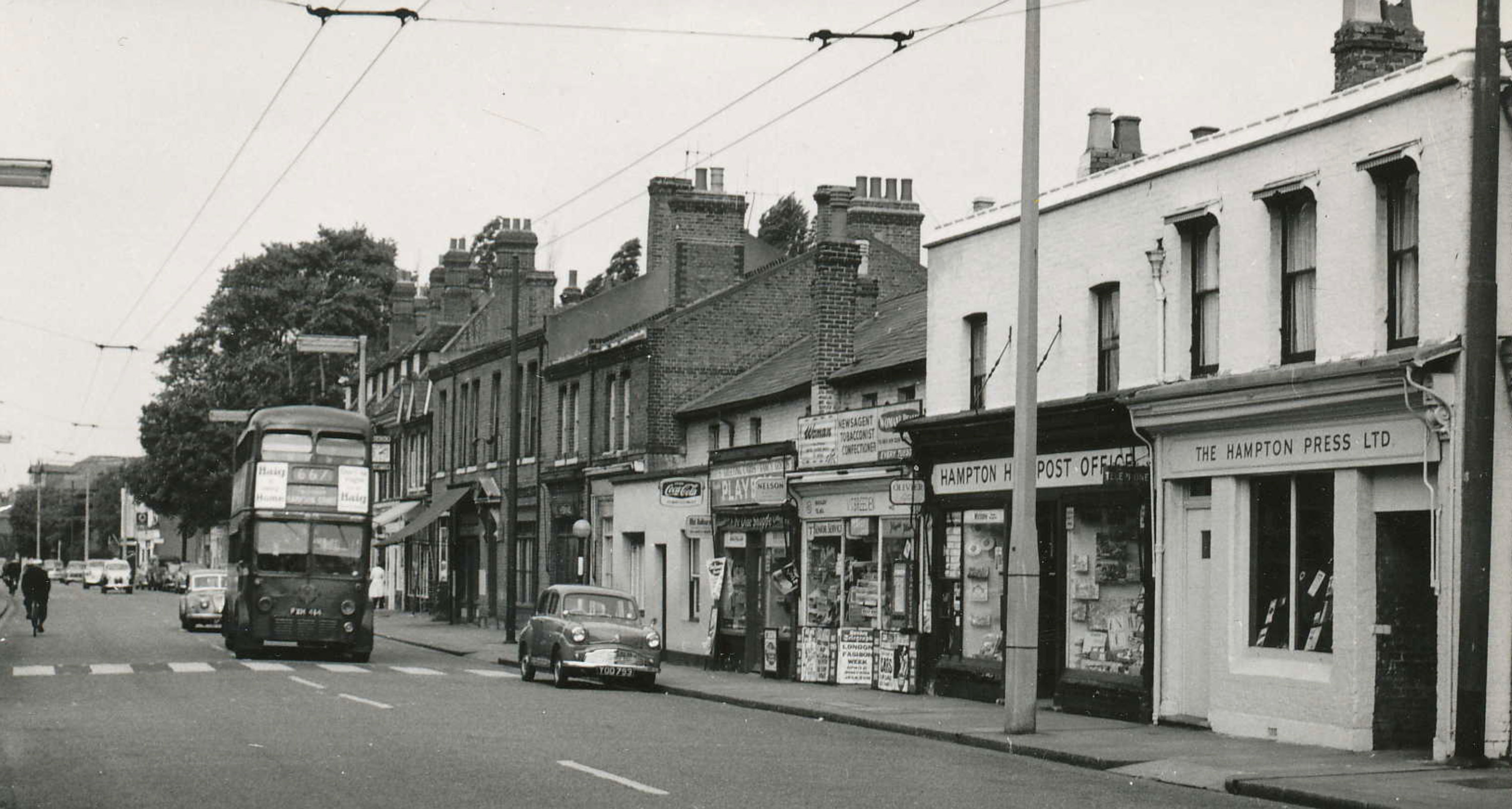
At the northern end of High Street there has been much rebuilding in recent years. For much of the last century Steven’s Garage occupied a large site that later became Currie Motors and is now rebuilt. Although most businesses and shops were in High Street there were a few businesses in Windmill Road including several engineering works such as British Anzani who manufactured outboard motors in the 1940s, 1950s and 1960s.
Between the 1930s and 1960s the nurseries disappeared and were developed for housing. In recent times there has been a trend to turn former office and other business buildings into housing and this may well be a trend that will continue.
John Sheaf
History of Bushy Park
At 440 hectares or 1100 acres, Bushy Park is the second largest of London’s eight Royal Parks. North of Hampton Court Palace in The London Borough of Richmond upon Thames, the park is known for its open land, tree avenues and copses, waterways, gardens and roaming herds of red and fallow deer.
The area in which Bushy Park resides has been settled by people for over 4,000 years. A Bronze Age burial mound exists in the north-east of the park near Sandy Lane. This ‘barrow’ was partly excavated during Victorian times and among the finds was a bronze dagger, now in the British Museum.
During medieval times, the land was cultivated for agriculture and traces of mounded ‘ridge and furrow’ ploughed fields can still be seen. These are the best examples in the county, Middlesex.
The expanse of low-lying land became a Royal Park in 1529 when it was given to King Henry VIII by his close adviser Cardinal Wolsey, along with Wolsey’s home, Hampton Court Palace.
One of the Park’s defining features is The Longford River; a fourteen-mile channel built by hand in the 1630s under the order of Charles I to make a water supply to Hampton Court’s ponds from the River Colne to the north east (the River Thames is next to the palace but at too lower level and back then affected by the tides too this far upstream). The Longford River is now an organic part of the landscape and supports a wide variety of plants and animals. It enabled several ornamental water features to be built embellishing the park:
- Diana Fountain and pond is the centrepiece of the mile-long Chestnut Avenue. This avenue, completed in 1699, was designed by architect Christopher Wren as a formal approach to Hampton Court Palace during the reign of William III and Mary II. Flanked on both sides by a single row of horse chestnut trees and four rows of lime trees, it marks the park’s height of royal ambition and landscape formality.The fountain was moved to its present location in 1713. The upper third (marble) part and bronze sculptures were designed by English architect Inigo Jones in (1639?) and comprises water spouting female figure, cherubs holding fish and the gilded statue atop is in fact not ‘Diana the Huntress’ but Arethusa a water nymph of Greek mythology. Before its location in Chestnut Avenue this fountain was in Hampton Court Palace and prior to that, originally in The Banqueting House, Whitehall, London (a building designed by Inigo Jones and completed 1622). The lower (limestone) two thirds of the fountain were added at its relocation giving it height and prominence in its current position in the park.
- In the north west of the Park the 18th century Upper Lodge Water Gardens, restored in 2011, are a historic gem and tranquil place to enjoy.
- Enjoy a walk in the 80 acre Woodland Gardens. Built during the 20th century the winding paths and streams are intriguing and perhaps enjoy a meal at the Pheasantry Café.
During the Second World War part of Bushy Park to the east of Teddington Gate became a United States Army Airforce air base named Camp Griffiss. It was from here that the Supreme Headquarters of the Allied Expeditionary Force (SHAEF) led by General Eisenhower planned the D-Day Landings for an early three month part of that campaign; find out more here. Of significance, following WW2 the Berlin Airlift was coordinated from the site and the remained being used by the British military until the mid-1960s when it was returned to parkland.
In the Hampton Hill corner of the park, Upper Lodge has its own history was used as a convalescent hospital for Canadian solders injured in the Great War; then used as a good school for underprivileged boys from London; then from 1952 to 1994 an Admiralty Research Laboratory carrying out world leading submarine defence technology development during the Cold War for Britain in addition to civilian maritime services too. Hydrodynamics, near silent propulsion, sonar, submarine photography and other work placing the British submarine fleet as a world leader was carried out here helping to maintain effective deterrent and peace. Find out more here…
Bushy House is within the park though not accessible to the public. Since 1900 it has been the home of the National Physical Laboratory (NPL), Britain’s scientific establishment for the refinement of measurement standards and associated technology. Find out more here…
See if you can spot some of the park’s birdlife.
Car parking in Bushy Park remains free of charge and better still, walk of cycle to the park.
Horse riding and fitness activities are provided by local businesses and the park encourages volunteer work, gardening in the Woodland Gardens and Volunteer Park Rangers too. Find out more here…
The Friends of Bushy & Home Parks supports the interests of the place and its activities. Find out more here…
History of St James’s Church
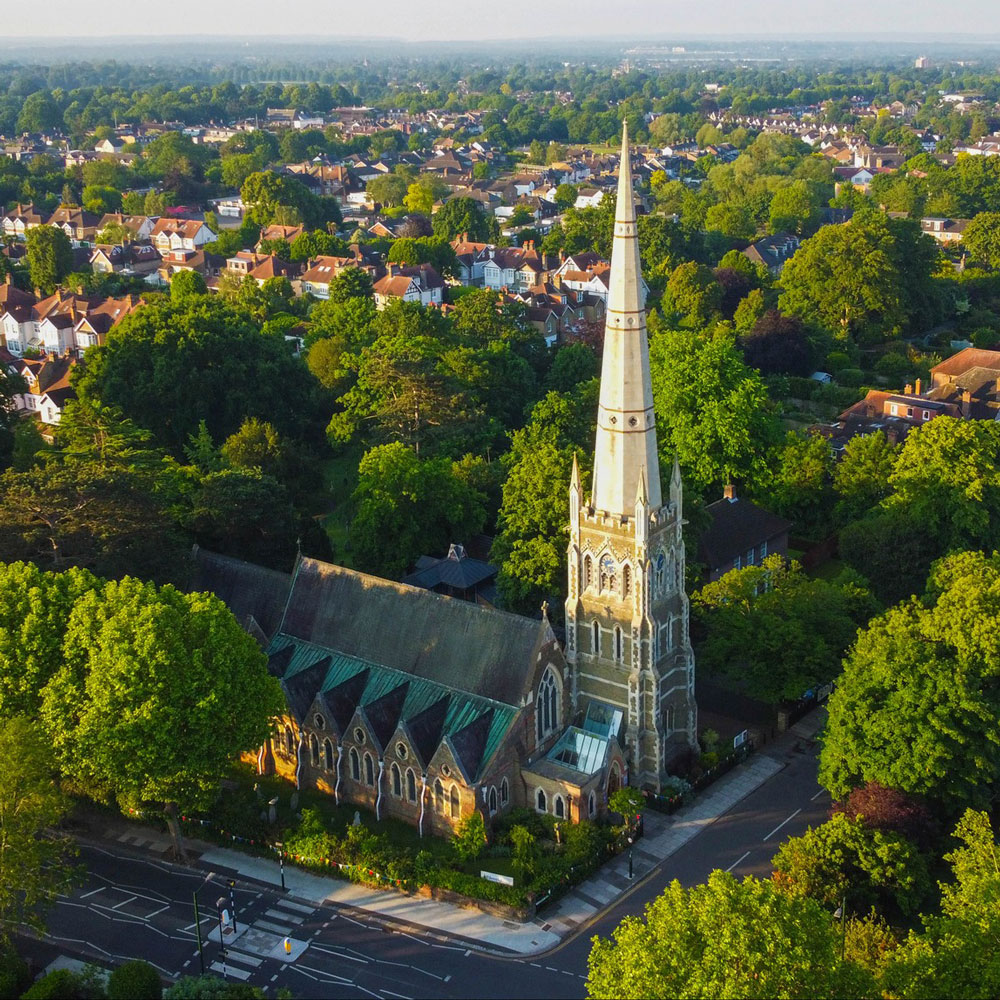
Originally, ‘Hampton Hill’ was part of the larger area that St Mary’s Parish Church in Hampton cared for (and in part owned) – although there were few dwellings. In the mid 19th century, the population grew dramatically, and Rev James Burrows of Hampton planned a church on Park Road, and appointed a priest, Rev John Fitx Wygram, as vicar. Fitz Wygram and his wife, Alice, were energetic in the growing community, founding the first schools in Hampton Hill, offering cottages at affordable rents and opening the Fitz Wygram Coffee House and Social Club.
The new church building was opened in 1863, although it continued to be improved decade upon decade until the spire was finally finished in 1893. The interior of the church is notable for its most colourful stained glass from that time. Since then there have been nine more vicars (and others), and countless people have been baptised, married or even buried here. In the 21st century we aim to be a Christian community for the people of Hampton Hill, offering worship Sunday by Sunday and a range of other activities, to which anyone is welcome.
History of St. Francis de Sales Parish
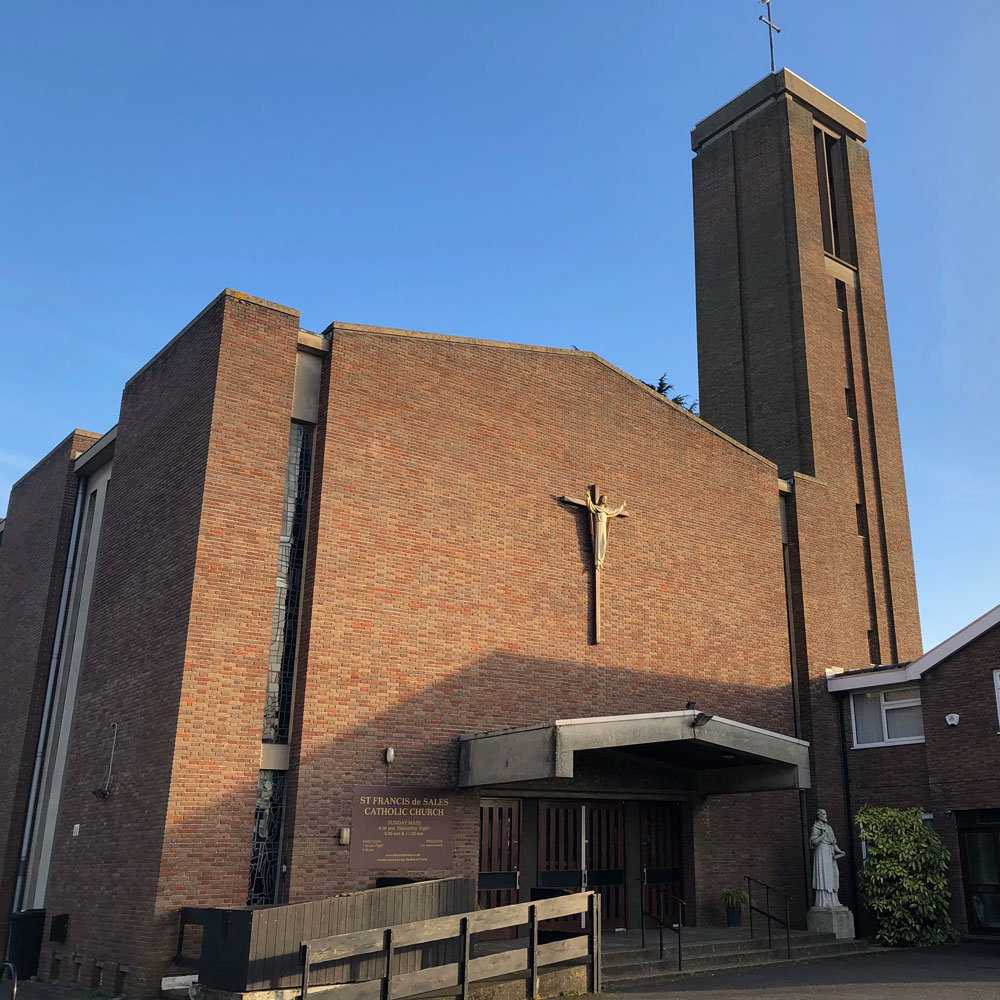
Our Parish was established in 1920. The first church was a large house on the corner of Wellington Road and Princes Road, on the site of the present church.
In 1926 the Parish was entrusted to the care of the Missionaries of St. Francis De Sales, and on 21st October 1928 our second church, a wooden structure, was built in the garden of the house.
This Church was used until 1964, when work began on a permanent Church. The old house was demolished and on 10th December 1966 the first Mass was celebrated in our current Church.
Sadly, the Missionaries of St. Francis de Sales relinquished the parish in 2013, but in 2014 we were able to welcome the Society of Christ, an Order of Polish Missionaries, who have cared for our Parish since then.
History of United Reformed Church
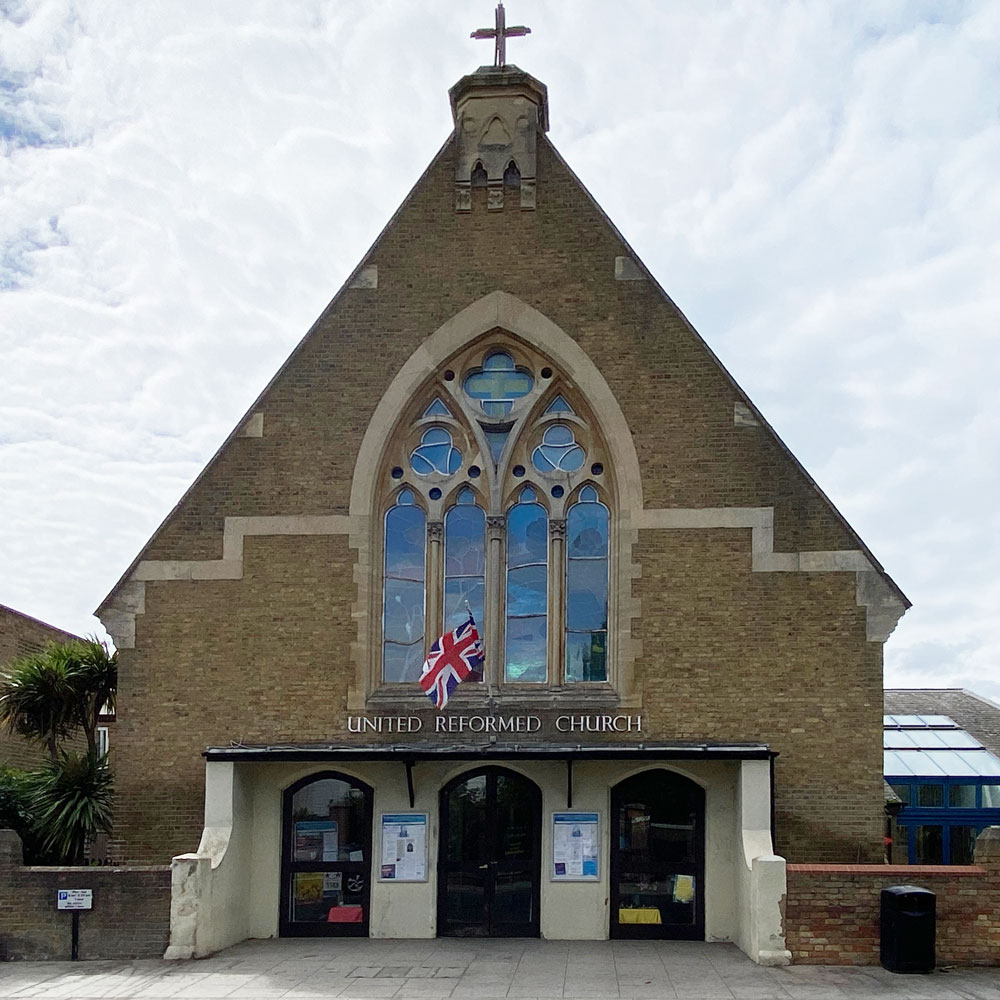
The church on the high Street has played a central role in the community for over 150 years. It is home to a friendly congregation all of whom live locally. The Chapel began as a result of a commitment to children, offering an education to families in the neighbourhood. This ‘Congregational’ free church made a priority of serving families and young children. The Junior Church was almost independent of the adult congregation. Many local people still have rich memories of activities linked to the church.
In 1971 the Congregational church in England and the Presbyterian church in England united. Soon the Churches of Christ joined. Now 50 years on the United and Reformed Churches became one. We believe in the Risen Lord Jesus and feel charged to follow his command ‘to love our neighbour as ourself.’
The rich suite of ancillary buildings are given over to community use. The Hampton Voluntary Care Group – now the Greenwood Centre – started life in one of the church offices. The complete rebuilding of The Foyer – architect John Webb – continues to contribute to community life. Ivytree Nursery is a wonderful partnership.
The iconic stained-glass window is an artistic joy – organised by Paul Nicholson. It can be visited any Saturday morning. The floodlit window gives pleasure and encouragement. A wide range of community activities are organised by church members. Everybody welcome!



